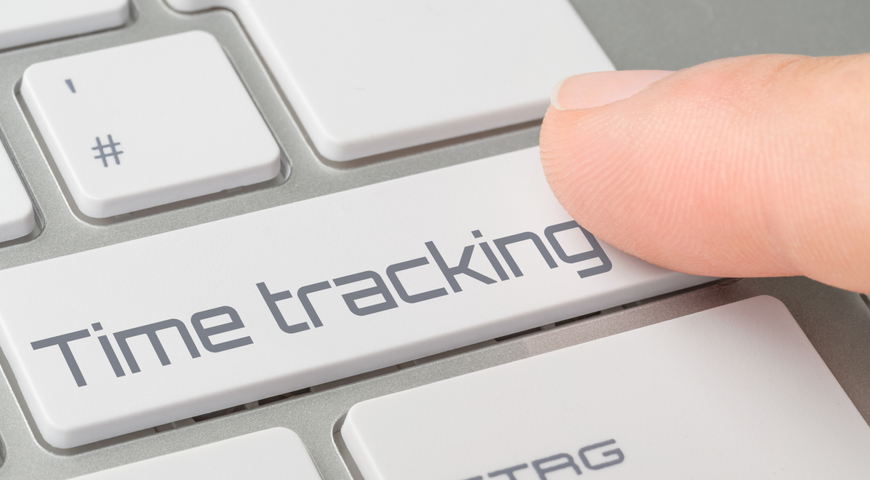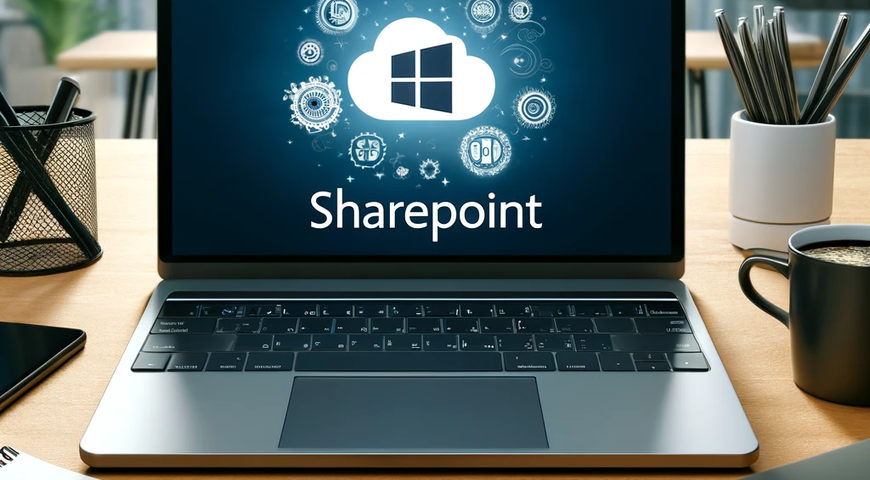
Modern MSPs increasingly leverage cloud-centric, subscription-based services rather than the old-school "break-fix" approach. The upgrade from legacy systems to highly customizable, automated ones is challenging but can be streamlined to ensure a smooth transition.
This article will explore how to switch to automated time-tracking software while ensuring both your employees and the organization's well-being.
Understanding the Significance of Automated Time Tracking for MSPs
Understanding how your MSP invests its time can be the difference between your project and all competitors in your chosen industry. Whether a small organization with several clients or an industry giant handling a vast client portfolio, every successful MSP relies on adequate time allocation, and to ensure that, robust MSPs rely on sensible time tracking.
Time tracking allows MSPs to monitor, gather productivity data, analyze various KPI metrics, and optimize their efforts to significantly improve project management, profitability, and return on investment (ROI). Let's explore a bit more below.
For starters, accurate, automated time tracking can calculate how much time is spent on both critical and low-impact tasks so team leaders and managers can pinpoint areas for improvement, allocate resources more effectively, and ensure a streamlined work process.
Moreover, time tracking can help with project planning, cost control, and performance evaluation
Revenue Implications of Accurate Time Tracking
If utilized correctly, accurate time tracking brings numerous benefits to MSPs. Let's explore some of them below.
Planning future projects
Historical time-tracking data enables easier planning for future projects. You can use the time statistics to calculate (and estimate) how long a similar project will take. Doing this over and over will improve your MSP's ability to set goals, timelines, and budgets aligned with realistic expectations.
Controlling costs
A project manager can leverage time-tracking data to identify resource over usage or underutilization areas to make the necessary adjustments and reduce unneeded expenditures.
Evaluating performance
Keeping track of time spent on various tasks helps evaluate your team and individual employee performance to identify areas for improvement and ensure additional training or support. Here, pinpointing top performers may be beneficial for specific employees but may also promote an unhealthy work environment if approached incorrectly. To avoid such a scenario, it's best to discuss performance evaluations with team leaders and the employees and develop solutions to raise productivity together.
Enhancing Efficiency and Productivity with Time Tracking Automation
Around 67% of companies globally outsource some or most of their IT infrastructure to MSPs. That sounds like a lot of business for the MSP industry. However, even in the mid-2000s, MSPAlliance estimated that there were approximately 150,000 MSPs operating globally. While the number has undoubtedly varied in years past, modern managed service providers are up against tens of thousands of competitors. And while standing out from the pack is a must for any successful MSP, maximizing the profitability of existing projects is just as important. Automated time tracking can help with that as well. Let's explore more on that below.
Accurately tracking billable time
Time tracking is a must for MSPs that bill their clients based on time spent procuring services. In such a model, your MSP can track time spent with your customers to adequately calculate billable hours, which, in turn, can lead to increased revenue and higher customer satisfaction. The latter can occur naturally (and is best if it does) when you present clients with the transparency and accountability they require to trust your service.
Optimizing costs
Via time tracking, MSPs can pinpoint inefficient processes and eliminate them from their service chain to free time for business-critical tasks. Reducing unnecessary expenses naturally increases profitability.
Optimizing resources
Knowing how your support teams and technicians spend their time with your clients enables more effective resource allocation. This way, you can minimize labor costs and prevent overstaffing to increase profitability further. However, it's important to note that pushing to squeeze the maximum out of the minimum required workforce can have downsides. Even if your numbers go up for a period, overworked employees can quickly become discouraged and exhausted, leading to lower productivity and fewer returns. This is why it's best to utilize time tracking to ensure both staff productivity and employee well-being and find the right balance to suit all involved parties, including your clients.
Project management (scope control)
With robust time tracking tools, MSPs can ensure any project's complete overview. Tracking time spent not only on procured services and employee productivity but also on different project components ensures your service won't exceed the agreed-upon scope in the SLA.
Time tracking's effect on ROI
In addition to being a game changer for project management and cost control, time tracking can directly impact your return on investment. Let's explore that below.
Revenue-generating opportunities
Time tracking can outline which tasks contribute the most to the success of different projects. MSPs can focus their effort on such critical activities to enhance their ROI.
Data-driven decisions
As mentioned, historical time-tracking data can help with future project planning. Well-planned, data-driven decisions regarding future projects can boost their potential success, thus increasing ROI.
Continuous, steady improvement
Historical data lets managers identify areas for improvement and continuously implement changes to optimize day-to-day processes, reduce costs, and increase ROI.
Accountability and Transparent Client Reporting
Many MSP clients will be satisfied to receive detailed (itemized) invoices. Such invoices provide more transparency into their MSP spending, which can translate into enhanced trust and loyalty to your offering. A robust time-tracking tool will simplify comprehensive invoice creation and can implement different pricing rates to suit complex services. This way, your MSP can account for the effort, resources, and time invested throughout the project timeline and avoid bargaining and unpleasant communication with potentially unsatisfied clients.
Moreover, an automatic time-tracking app continuously creating detailed service reports and invoices can contribute to optimal transparency and long-lasting MSP-client relationships.

Basics of Time Tracking Automation
Time-tracking software is a tool (e.g., a time-tracking app) reliant on unique identifiers to record time spent by employees on various tasks and projects. MSPs can use time-tracking solutions to increase efficiency, enable accurate billing, and unlock better time utilization and management.
Basic time-tracking apps typically involve several primary features, such as time entry management, to outline start and end times (as well as work breaks) and to record and track the time employees spend on various tasks. Moreover, a timesheet app can generate timesheets and summarized reports to give managers a clear view of recorded hours, project progress, and other relevant metrics.
Time-tracking software can enable project and task tracking to allocate employee time more efficiently to specific tasks (or projects), create invoices based on technicians' recorded time to ensure accurate client billing, and present analytics and insights to gain a deeper understanding of productivity, time allocation, and project profitability.
Defining Automation in the Context of Time Tracking
Old-school time tracking relies on manually punching in and out to create time entries (e.g., a paper timesheet). More modern approaches use Google or Excel timesheets or online trackers that require users to start and stop a timer to track time spent on various tasks. On the other hand, automatic time-tracking software requires little human intervention, eliminating the need for manual time-tracking and data input. For example, an automated time tracker can work in the background and leverage AI to record app activity. As for more advanced features, the best time-tracking tools offer seamless integration for timers and apps to record time against specific tasks (e.g., during a focus session) and sync all collected metrics within weekly timesheets.
In short, a robust automatic time tracker can:
- Provide numerous time-tracking tools to suit multiple projects and virtually unlimited time tracking - online solutions, mobile apps, mobile extensions, etc.
- Offer detailed reports and analytics tools
- Track how much time is spent on a specific task
- Sync collected data between apps and the time-tracking software
- Integrate with other productivity tools and project management apps
Benefits of Shifting from Manual to Automated Time Tracking Systems
The best time-tracking software can enable sensible productivity monitoring and adequate task management. However, there are more benefits to implementing the right time-tracking solution for your MSP. Let's explore them below.
- Payroll management
Dedicated time-tracking tools enable MSPs to generate payroll and export it to CSV files whenever needed. You can include all employees in the list, select the payroll date range, customize currencies and payment rates, and even enable multiple payment methods to save a ton of time for your payroll teams.
- Seamless integration
Integrations are critical to allow businesses to synchronize their detailed timesheets (housed online) with all relevant current applications. Implementing an electronic timesheet app can enable native integrations with common organizational apps used in CRM, ERP, project management, accounting, and payroll.
- Enhanced prioritization
The constant barrage of unplanned tasks, notifications, and coworker requests can quickly shift employee (and manager) focus from critical projects to lower-impact issues.
Time tracking can help with poor prioritization by easily identifying the most pressing tasks and streamlining workflows to ensure adequate time and effort allocation.
- Improved communication
If approached sensibly, time tracking can empower more productive communication between managers and employees, as well as between the MSP and its clients. By relying on a comprehensive feedback system designed to suit support teams, technicians, managers, and clients, all involved parties can share their concerns or ideas for improvement more freely. Such an environment complements honest feedback, which, in turn, can increase the MSP's performance and productivity across all fronts.
Time Tracking Disadvantages
While time tracking can bring many benefits, it can also cause employee stress, hinder productivity, and overcomplicate workflows. Let's explore why that is below.
- Can be distracting
There's a difference between a time tracker and a good time tracker app. Some tracking and attendance solutions can be incredibly detail-oriented, showing not only the work hours for a specific employee but also their activity throughout the entire day based on mouse clicks, scrolls, etc.
Such a solution can raise worry in employees, redirecting their focus from the task at hand to monitoring productivity metrics. While distracted by timing in and out on the time-tracking app, meeting set-in-stone deadlines, and similar app requirements, employees won't dedicate their full potential to critical problem-solving or coming up with innovative solutions.
- Can lead to micromanagement
While a time-tracking app can accurately track hours worked by your employees, a primary downside is it can lead to micromanagement. Team leaders and managers can fixate on activity levels, work hours, expected efficiency rates, etc., and become increasingly involved in your staff's day-to-day tasks. Such a scenario can lead to two additional cons of constant time tracking:
- Managers can spend increased time on time-tracking reports, which can affect their morale, productivity, and efficiency.
- Employees may feel overwhelmed by constant monitoring, questions, suggestions, etc., which can affect their productivity and morale.
- Can demotivate employees
While this doesn't apply to all employees, many of them can feel as if their work ethic is under a microscope and that their managers don't trust them to handle their own work time. Moreover, efficiency metrics can raise two primary concerns for employees:
- Working too "slowly" can lead to scolding, pay cuts, or even a demotion. If an employee is afraid that they aren't going through their daily tasks quickly enough, they may become fixated on the timer ticking on their screen instead of the task at hand, reducing productivity.
- Pushing their limit to work as "quickly" as possible may raise the expectations toward the daily quota and set unbearable goals and deadlines.
To avoid similar pitfalls, it's best that your MSP focuses on the actual work done by employees for a day (or a week) rather than their minute-by-minute activity and calculated efficiency rates. This way, you can still gather productivity metrics to pinpoint areas for improvement, but at the end of the day, the most important (and deserving of praise) will be the accomplishments of your workforce.
- Might not accurately depict the whole picture
The next potential disadvantage of minute-by-minute time-tracking apps is inaccurately portraying personal productivity. Imagine the following scenario:
- One employee can keep up with a quicker pace of work and finish a significant volume of tasks in a very short period. However, suppose they chain multiple tasks without resting. In that case, that can quickly lead to burnout, which will require extended rest before they achieve the same "optimal" speed, meaning their productivity chart will look volatile (with spikes of "very high" and "very low" productivity periods).
- Another employee works more methodically; they take more time to complete a task without "pushing it to the limit" but require less rest between assignments as they don't exhaust their resources that quickly. They still provide stellar results at the end of the workday, but their work is spread evenly throughout the period without significant spikes (up and down) on the productivity chart.
A complete day overview will show that both employees have completed their assignments. However, if managers follow the minute-by-minute evaluation of their productivity charts, they may unfairly evaluate one or the other as suboptimal performers, leading to lower morale and a potentially unhealthy work environment.
- Might raise employee privacy issues
Privacy is among the most significant concerns for employees using time-tracking apps. Depending on the software, the tracker can take screenshots of employee computers or laptops and thus potentially store images of private documents, messages, and other sensitive data. (especially if the employee uses their personal device for work in a BYOD environment).
Overcoming Common Time Tracking Misconceptions
The promise of time tracking can entice organizations to adopt it without doing their due diligence. However, proper time tracking is a continuous process dependent on accurate customization and innovation.
Time management software is universal for all organizations
There is no one-size-fits-all time-tracking software. There's a huge difference between an app supporting basic time-tracking features and a dedicated time-tracking tool packed with additional features to allow deep customization per user. Organizations must take the time to align their chosen time trackers with their employees' training and experience, goals, and desired outcomes.
To overcome this myth, trying out various tools and strategies and adapting them to your specific use cases is helpful. You can also go for a comprehensive time-tracking solution, enabling automation and high customization levels to tailor it to your needs and manage the entire process from a single console.
Employee monitoring software is focused on doing more in less time
Among the most critical misconceptions about time tracking is that the approach will enable completing an astonishing amount of tasks in the shortest time window. Such expectations can lead to stressed employees, burnout, and lesser quality of work. This misconception can also indirectly imply that multitasking enhances productivity or that more hours worked will equal more completed tasks.
To overcome this misconception, it's necessary to understand that time management isn't about doing more tasks in less time but completing the right tasks at the right time. This can be achieved by setting clear priorities and reasonable, achievable goals. To empower prioritization, it's helpful to break down current tasks into smaller chunks and assign realistic deadlines to each. Lastly, frequent, short breaks can help employees refocus and feel more energized to proceed with the next task, especially if they rely on sensible to-do lists and organizational apps.
Time tracking isn't affected by additional factors or skills
Implementing the same time frames and deadlines for unlimited projects across various users (employees) can quickly shatter your expectations of enhanced productivity. Different team members have different skills and factors affecting their performance, so it's crucial to tailor your chosen solution to account for that. To do so, you can encourage communication and collaboration to ease decision-making and problem-solving. This way, your staff can "chain" productive hours worked by several employees to ensure a project is completed with the utmost energy and efficiency, without burnout or necessary overtime.
Time tracking only relies on thorough planning and scheduling
Planning and scheduling are essential for successful time tracking and management. However, focusing entirely on them can lead to missed opportunities, procrastination, and frustration. An overscheduled approach leaves little space (and time) for employees to truly tap into their productivity and take much-needed rest when fatigue occurs.
To overcome this misconception, managers can organize projects with higher flexibility in mind. This means continuously examining the results of the ongoing work schedule, adjusting to new circumstances, and re-evaluating the results to ensure the implemented changes are beneficial to productivity and employee well-being.
While tackling these misconceptions may seem like a lot of work, approaching time tracking as an evolving element within your MSP environment can yield better, long-lasting results, especially if you leverage a robust time-tracking tool to help you with customization and continuous support.
Evaluating Your Current Time Tracking System and Paving the Way for Improvements
Every time-tracking app should be able to calculate how long tasks take across your MSP. However, a basic plan, a free trial, or even paid plans for an outdated solution can "provide" more issues than benefits. If your MSP has decided it's time for an upgrade, the innovation process may be challenging, but it's well worth it if you go the extra mile to set it up perfectly.
Identifying Bottlenecks and Inefficiencies
Identifying bottlenecks in business processes can be challenging if you haven't performed it before. Nonetheless, you can monitor and detect common signs of bottlenecks and inefficiencies to ensure lean processes. Although not all common causes for bottlenecks are directly due to your time tracking system, you can identify them to improve and adapt the time tracking process across the entire organization.
- An extensive volume of backlogged work
Backlogged work piling up may mean your teams are understaffed, overloading your employees with various tasks. For ongoing projects, it's helpful to outsource a portion of the more manageable tasks to another team, an intern, or even managers with some available time.
For future projects, expanding your teams with additional hires or planning the project in-depth to set a more reasonable deadline can be beneficial.
- Teams are required to do a lot of duplicate work
In addition to slowing down the workflow, duplicate work can cause frustration between team members. To avoid bottlenecks, team leaders can implement a work management tool in addition to time-tracking software to define responsibilities and dependencies and assign tasks to specific employees based on their skill set and expertise.
- Outdated (legacy) project management tools cause further slow-downs
Outdated tools and software can be challenging to navigate and slow to update your progress. Instead of getting used to shrugging and "just accepting" that the tool is sub-optimal, it's best to update it to a more reliable solution.
- Client response times are increasingly slow
Regular, continuous client feedback is critical, but often, it can cause a bottleneck in the service delivery processes. To avoid bottlenecks related to prolonged client feedback, it's helpful to discuss the matter with your clients and outline how best to reach them when feedback is required. We will explore more on how to eliminate feedback-related bottlenecks in the section below.
Soliciting Feedback from Teams and Clients
Employee and customer feedback is essential for MSPs to improve their service offerings and support processes and attract and retain experienced staff and clients. Aside from defining clear goals regarding staff and client experience, organizations can do the following to ensure actionable feedback:
- Define and ask the right questions
The usability of your feedback relies heavily on the quality of the questions you asked. If they are clear, concise, relevant, unbiased, and actionable, you can ensure transparent, honest feedback from employees and clients. You can use various question types: open- and close-ended, ranking, rating, and multi-choice questions. Moreover, you can leverage feedback frameworks (e.g., CSAT, ESAT, NPS) to compare feedback results.
- Leverage the most suitable feedback channels
A well-thought-of question won't serve any good if it doesn't reach its intended audience. Depending on your MSP's goals and scope, you can implement different feedback channels to reach out to staff and clients.
Common feedback channels include interviews, surveys, reviews, focus groups, suggestions, testimonials, complaints, social media, and ratings. Every channel has pros and cons, so organizations must consider five essential factors for productive feedback: time, cost, response rate, quality, and quantity of the feedback.
Moreover, it's best to rely on both solicited and unsolicited feedback and qualitative and quantitative feedback to ensure improvements for all parties involved.
- Analyze the feedback to outline actionable suggestions
MSPs can utilize numerous methods and tools to organize, visualize, and interpret feedback data (charts, graphs, spreadsheets, dashboards, etc.). Project leaders and managers can then identify key patterns, insights, and recommendations from clients and employees to prioritize them based on urgency and potential impact. Afterward, managers must genuinely communicate their findings with staff and clients to show them that their feedback matters and they actively contribute to the MSP's continuous improvement.
- Continuously improve the feedback conditions
Feedback is a continuous, evolving process. Your MSP must monitor and evaluate the feedback experience, results, and actions to align them adequately with your goals. Moreover, you must track and calculate changes from the feedback-induced actions to properly examine different KPIs, such as reduced churn, increased sales, improved productivity, and enhanced quality.
- Encourage a comprehensive feedback culture
Instead of constantly reminding employees and clients to provide feedback, your MSP can foster an honest feedback culture. In such an environment, feedback is not a dreadful necessity but a constructive opportunity to share ideas and recommendations, to grow and innovate. Such an approach ensures feedback is transparent and continuous, and every responsible person is accountable for their feedback actions. And the more time passes, the more staff and clients will feel encouraged and rewarded for contributing to the MSP's success.

Assessing the ROI of Your Current System
There are numerous ways to calculate ROI depending on the industry, examined project, and company goals and perceptions. In general, the ROI can be estimated by calculating the costs and benefits of a project (in this case - your current time-tracking system) over a specific period.
The system's benefits can have different positive impacts, such as reduced expenses, increased revenue, higher customer satisfaction, improved quality, more streamlined compliance, etc.
The costs of the current system are expenses or negative outcomes, such as operating costs, capital expenditures, opportunity costs, maintenance fees, etc. The basic formula to calculate ROI is as follows:
(Benefits - Costs)/Costs x 100% = ROI
However, to understand the true ROI of a project, your MSP needs to consider other factors that can't be measured in numbers so easily. Such factors include the time value of money, risk of future cash flows, and non-financial benefits and costs (e.g., employee well-being and effects on overall productivity).
To dive deeper into ROI calculations, you may need to leverage advanced methods, such as internal rate of return (IRR), net present value (NPV), payback period, and more.
Top Tools and Platforms for Time Tracking Automation
Automatic time-tracking software can vary from vendor to vendor, so your MSP must take the time to evaluate potential picks and choose the most suitable one for your needs, preferences, and budget. The best time-tracking software should offer advanced, customizable features, flexible pricing, and an easy-to-pilot console to unlock your time management potential.
Acronis Advanced Management
Acronis Advanced Management offers comprehensive business automation for MSPs. Organizations can streamline business operations "from Quote-to-Cash" via automated billing and smart resource utilization to empower top-tier business efficiency, predictability, and control.
With Acronis Advanced Management, your MSP can:
- Enhance back-office efficiency and productivity
Integrated time ticketing, automated billing, and time tracking can reduce operational friction, thus improving customer happiness and efficiency.
- Boost employee and customer satisfaction
Automation enables better communication and customer interactions, further increasing client (and employee) satisfaction.
- Uncover hidden profits to maximize revenue
Accurate time tracking of billable hours can increase revenue for all systems you manage. Moreover, you can identify invisible costs via dedicated time tracking and billing to optimize revenue even further.
Acronis Automatic Time Tracking
Your MSP can maintain complete visibility into time spent servicing all clients matched between SLAs, technician entries, and contractual agreements. Moreover, you can leverage in-depth reports to ensure optimal hires and increase the quality of services rendered by your current staff, enabling priority support, detailed expense tracking, shift scheduling, and more. In addition, you can uncover revenue opportunities and assure all clients of the value you deliver to their systems with over 100 dedicated MSP features.
You also get access to the complete traceability of billable hours across all customers to ensure accurate revenue via Acronis' flexible billable engine that enables any billing method to adapt to your specific business and industry. Moreover, you can automatically generate invoices to comprise all delivered services - from software utilization to billable and non-billable technician-logged hours.
Lastly, you can scale up or down depending on your workload and budget while customizing all available MSP features to ensure the service you want to bring to your customers.
Integration with Existing MSP Software and Time Tracking Automation Solutions
Seamless Sync with Acronis Advanced Management
Acronis Advanced Management is an add-on package that unlocks workload and patch management capabilities to the Acronis Cyber Protect Cloud, an industry-first integration to allow your MSP to deliver data protection, cybersecurity, file sync and share, and security management to clients via one integrated solution while unlocking your time-tracking potential across all systems and services.
Centralizing Data for Holistic Management
The holistic approach requires MSPs to collect, store, and maintain essential data in a single location instead of spread across multiple silos (platforms, vendors). Centralizing your data comprises top-down, operational, and bottom-up perspectives to allow comprehensive data governance across the entire organization. In such an approach, different perspectives still bring individual value but also complement each other.
Via the holistic approach, MSPs can:
- Break down data silos to improve data access and sharing, thus increasing transparency across the organization.
- Improve cross-functional collaboration and shareability to ensure all teams are on the same page regarding specific projects.
- Build a centralized source of truth to enhance data analytics and better identify areas for improvement.
- Enhance data governance and security to improve data quality and implement high-end data protection.
Regarding time tracking automation, data centralization enables better control over collected metrics so managers and team members can quickly uncover helpful insights. Creating reports based on centralized data can grant an extended view of the MSP's business to allow more focused decision-making and improved performance.
Best Practices for Implementing Time Tracking Automation
Phased Implementation and Pilot Testing of the Time-Tracking Tool
Phased implementation requires organizations to break down the process into smaller chunks and assign each with a specific timeline and goals to ease project management. This approach enables MSPs to examine all aspects of the automatic time-tracking software before introducing it to all company systems.
Phased implementation allows businesses to detect and address any issues that arise during testing, ensuring that tracking work hours via the chosen solution won't hinder productivity or critical business processes once it goes live across the entire infrastructure.
Configuring Alerts and Oversight Mechanisms
MSPs can configure alerts not only to inform managers of current issues but also to notify them of successes. Alerts can be customized to fit potential outcomes within the testing group (or team) so managers can confidently track the implementation progress. Moreover, oversight mechanisms can be implemented to help monitor employee well-being and how the new software impacts their productivity. Here, it is more beneficial to adopt a two-way communication system so that employees can share insights and propose ideas for improvement.
Periodic Review and Adjustments
Gathering time-tracking data, issue and remediation reports, employee suggestions, and client feedback (if possible during the implementation stage) can help MSPs periodically review the impact of the new solution and adjust it continuously to ensure optimal performance and adequate results across the board.
The Role of AI and Machine Learning in Advanced Time Tracking Software
AI-driven time trackers can passively track task activity, recognize when an employee starts and stops working on specific tasks, and reduce the workload on managers and team leaders. If implemented correctly, such solutions can unlock several benefits for modern MSPs.
Predictive Time Management and Resource Allocation
AI-driven time-tracking software can gather activity data, analyze it, and provide predictive insights. For example, it can forecast the duration of a specific task for a particular employee, which enables easier planning and resource allocation. However, such informational power may be overwhelming if not approached correctly. Managers must keep in mind that even if the numbers suggest an approximate timeframe for a specific task, employee productivity may vary depending on the day, hour, and unique nature of each task.
Advanced Data Analytics for Operational Insights
AI-powered software can gather, process, and analyze operational time data quickly. This can provide managers with insights into potential areas for improvement. If leveraged adequately, in-depth AI-created reports can help MSPs enhance time management, customize day-to-day processes, and plan for the future more effectively.
Automated Task Recognition and Categorization
AI-powered timesheets can reflect each minute spent on specific tasks by employees. They can help managers track which tasks are put off most often and better categorize the current workload day after day. Moreover, employees can use dynamic time-tracking data to understand other team members' work processes and potentially increase productivity. Nonetheless, minute-by-minute time tracking can be exhausting, both for staff and managers, so it's best not to overindulge in it. The overflowing amounts of data every few minutes can provide insights, but they can also invite micromanagement and hinder productivity due to focus shifting.
Training Teams and Transitioning to Automatic Time Tracking
Automatic time-tracking apps can unlock numerous benefits for MSPs but face multiple obstacles before, during, and even after proper implementation. If your organization plans to switch from manual to automatic time tracking, managers and team leaders should take the time to pave the way and continuously manage the solution to its success.
Addressing Staff Concerns and Resistance
Your employees can perceive automatic time tracking as a lack of trust and an intrusion of privacy (sometimes, rightfully so). However, for MSPs, potentially the most significant time-tracking benefit is the ability to bill clients accurately. While you can also improve productivity across all teams and ease project management and resource allocation, your primary focus should be correctly calculating worked hours by your technicians to create invoices that depict the complete services procured to clients.
So, the first step to implementing sensible automatic time tracking is to communicate its purpose to the entire staff. As long as managers explain the process thoughtfully and don't indulge in micromanagement and criticism, employees can gradually adapt to the new system and use it to contribute to the organization's overall productivity, efficiency, and generated revenue.
Tailored Training Sessions and Workshops
Even though automated time-tracking systems should be straightforward to use with minimal human supervision, it's important to ensure that your employees understand how the solution works and what it brings to the table. This is why training sessions are a critical part of the implementation process. Be it workshops, customized training, one-on-one sessions, or extensive reading materials, your employees should know they can practice freely and receive assistance (when needed) to ensure their learning curve is as smooth as possible.
Measuring and Celebrating Early Successes
Automated time-tracking tools can quickly generate tons of activity data for managers to examine. In the first stages of implementation, activity data will potentially show more areas for improvement and fewer immaculate work sessions.
However, managers can choose to focus on the positives rather than the negatives here. While flaws in the workflow can be used to innovate and increase efficiency, early successes should be celebrated more strongly. Such an approach can raise your employees' confidence (both in the solution and themselves), translating into more calm, determined work sessions. The latter can free up time for team leaders to customize the current system to your staff's skills and experience to create a well-balanced, nurturing work environment. Once you reach this point, your organization can steadily grow, both in procured services and client base, thus ensuring confident employees, satisfied customers, and enhanced revenue.
Analyzing and Utilizing Time Tracking Data
Once you've implemented an automatic time-tracking solution, it's time to collect and analyze data sensibly to unlock your MSP's potential. Below are three common approaches to get started.
Identifying Trends and Areas for Improvement
You can start by categorizing time tracking data by activity types, such as client work, technician support, meetings, and billable and non-billable hours. This categorization will clearly show where time is spent so you can start identifying trends in your workflow.
Trends can be outlined by defining and answering business-specific questions. Such can be the following:
- Are specific tasks taking more time than previously expected?
- Are any tasks suitable for automation still done manually?
- Are your project/team meetings taking longer than expected (and needed)?
- Do teams spend more time on un-billable work?
Once you identify trends and bottlenecks, you can focus on areas for improvement and gradually eliminate all inefficiencies.
Generating Comprehensive Reports for Stakeholders
Process optimization can be intoxicating, especially if you're moving seamlessly past various issues. However, it can also feel cumbersome and tiring due to sticky issues that require more in-depth remediation. Regardless of the case, it's best to regularly generate reports to show stakeholders how time is being allocated and used, the current challenges to overcome, and what accomplishments have been made. This way, your MSP will leverage transparency and adequate communication to move forward and stay competitive in the long run.
Data-Driven Decision-Making for MSP Growth
Useful data is a critical element for developing a reliable business strategy. Continuously analyzing time-tracking data and gathering feedback can help you recognize the strengths and weaknesses in your work process; while celebrating your achievements, you can identify weak spots and work relentlessly to improve them.
Moreover, you can use time-tracking data to outline new goals and set new action (and project) plans based on reliable insights. Even if you have achieved a satisfactory level of performance, it's best to seek further feedback from employees and clients and dive deep into current trends to make informed, data-driven decisions. This way, you can review and adjust time-tracking policies and tactics to learn more about what truly drives your MSP's success, enabling continuous growth and business continuity.
Anticipating Future Trends in MSP Time Tracking Automation
From smart calendar integration and time-blocking strategies to unlimited tracking and AI-powered assistants, the field of time-tracking innovation is evolving at incredible rates. Modern MSPs should take the time to research, understand, and prepare for emerging trends accordingly.
The Rise of Context-Aware Time Tracking
An AI-powered assistant integrated into your time-tracking tool could take context-aware notes and summarize the user's day for them. The assistant could, for example, utilize speech-to-text algorithms during project meetings and generate summaries automatically without requiring manual input. Moreover, it could automatically inspect activity data during a specific project and log critical milestones to create a comprehensive daily journal. This journal can comprise summaries logged at the end of each work day, containing automatically generated activity lists that can highlight productive hours and areas for improvement.
Remote Work Integration
As hybrid and BYOD work environments are on the rise, the time-tracking software of the future is set to meet more complex workflow needs and requirements. Such solutions could incorporate project-based billing, performance tracking, and collaboration tools to ensure remote team productivity.
Ethical Considerations and Future Challenges
While automatic time tracking can improve efficiency and productivity across an entire MSP business, your organization must take the time to consider the potentially unethical implementations of the approach.
Many employees feel that automatic time-tracking apps are directly violating their privacy. A feeling that is especially true if you resort to an invasive real-time tracker or a suboptimal solution that doesn't have customization options to define which activities are tracked and which aren't. To address this and ensure your employees' well-being, you, as a company, must choose a robust time-tracking solution, implement it only on company computers, and use it to track only work-related data. Moreover, your employees must be aware of how the software works and how it will monitor their activity. Lastly, you must have their full consent regarding the time-tracking process.
Even if this may sound restrictive, your employees are your most valuable asset, and you should nurture them accordingly. This means choosing a sophisticated automation solution to leverage AI, machine learning, and ethical decision-making to ensure your workforce's well-being alongside the many benefits automation can bring. If implemented properly.
About Acronis
A Swiss company founded in Singapore in 2003, Acronis has 15 offices worldwide and employees in 50+ countries. Acronis Cyber Protect Cloud is available in 26 languages in 150 countries and is used by over 20,000 service providers to protect over 750,000 businesses.




